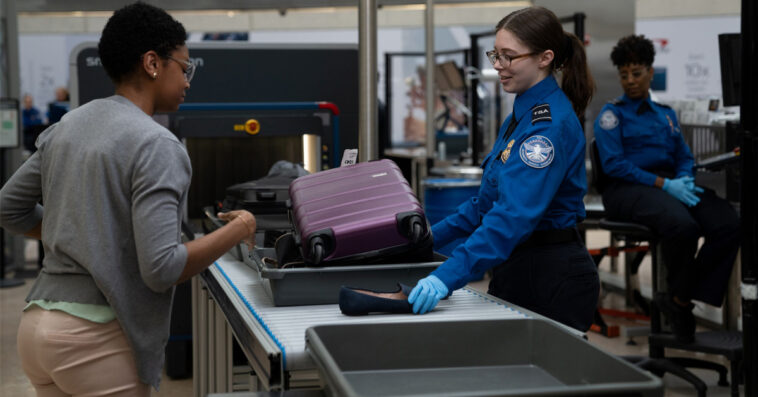For two decades, the familiar ritual of untying laces and removing footwear has been an unavoidable part of navigating airport security. But no more. In a landmark decision, the Transportation Security Administration (TSA) has finally announced the end of its mandatory shoe removal rule, effective July 8, 2025. This long-awaited change, a direct result of advancements in screening technology, promises to streamline the travel experience for millions of passengers nationwide, allowing them to keep their footwear on as they pass through airport security checkpoints.
Barefoot No More: TSA Announces Major Shift in Airport Security
Good news for air travelers: The days of fumbling with laces and walking barefoot through airport security lines are officially over. Effective immediately, the Transportation Security Administration (TSA) is eliminating the long-standing requirement for passengers to remove their shoes at checkpoints. This welcome change was announced Tuesday by Kristi Noem, the Secretary of Homeland Security.
“TSA will no longer require travelers to remove their shoes when they go through our security checkpoints,” Secretary Noem stated. She emphasized the dual goal of the policy shift, adding, “We want to improve this travel experience, but while maintaining safety standards and making sure that we are keeping people safe.”
The initial report of this significant policy update came from the blog Gate Access.
Secretary Noem reassured the public that security remains paramount despite the change. “The key to our approach is layered security,” she explained. “Passengers will still pass through multiple layers of screening. They’ll also go through identity verification.”
While Joe Biden’s administration had been evaluating the rule, Secretary Noem specifically credited President Donald Trump for initiating its elimination. This move marks one of several potential adjustments to TSA protocols, with Noem indicating that other changes are under consideration, provided they can be implemented without compromising safety.
How the Shoe Removal Rule Came About—And Why It’s Finally Gone
The infamous shoe removal policy traces its roots back to a December 2001 incident involving Richard Reid, later dubbed the “shoe bomber.” Reid attempted to ignite explosives hidden in his shoes using matches on a transatlantic flight from Paris to Miami, triggering widespread alarm and a lasting legacy in airport security.
Although that attempt didn’t lead to an immediate rule, the Transportation Security Administration officially implemented the shoe removal requirement nearly five years later. According to the agency’s own historical timeline, the decision was made after intelligence indicated an ongoing threat, especially following the failed 2006 plot to detonate liquid explosives aboard multiple transatlantic flights. That same event also led to the introduction of the TSA’s 3-1-1 rule for liquids in carry-on bags.
“In those 20 years since that policy was put in place, our security technology has changed dramatically. It’s evolved. TSA has changed,” said Secretary Noem, referencing the deployment of modern scanners and increased staffing at key checkpoints.
Noem also highlighted the role of updated identification standards: “The REAL ID compliance allows us another layer of security, knowing who’s going through our checkpoints and who isn’t.”
For years, travelers enrolled in the TSA PreCheck program—part of the agency’s Trusted Traveler Program—were exempt from the shoe rule, provided they completed a background check and paid the associated fee. Despite the broader policy shift, Noem said the program will continue to offer value. Noem said she expects travelers to see value in this program still, even if it is not the only way to avoid taking shoes off.
Source: CNN

